2022 Jeep Wagoneer First Drive Review: A Classic Name Takes Jeep To New Heights
When I first received the invitation to drive the 2022 Jeep Wagoneer in New York City, I was a bit confused by the venue Jeep had chosen, but after listening to presentation on this all-new SUV, the destination made total sense.
Although NYC is busy, loud, and plagued with horrible traffic, it’s also known for its trendy fashions and posh lifestyles, which applies to the vehicles you see driving around. After yellow taxis, Cadillac Escalades and Range Rovers are easily two of the most popular vehicles you’ll see while visiting the city, and that’s exactly the premium, luxury-minded customer Jeep appears to be targeting with the Wagoneer and Grand Wagoneer duo.
Get a Quote on a New WagoneerDecades before “SUV” became a term, it can be argued that the original Wagoneer was the first-ever luxury SUV, predating the Range Rover by six years. This Jeep went into production starting in 1963 and survived with very few changes until 1991. Just think about that: in 1991, Dodge dealerships were selling state-of-the-art Viper and Stealth sports cars, while Jeep was still selling the carbureted, wood-paneled Grand Wagoneer. The “Grand” in the Grand Wagoneer’s name started in 1984 when Jeep introduced a premium (and yes, wood-paneled) version of the XJ Cherokee, called the Wagoneer. The difference between the 2022 Jeep Wagoneer and the 2022 Jeep Grand Wagoneer, though, has nothing to do with size. For this first-drive review, we’ll be focusing on the 2022 Jeep Wagoneer.
What’s New?
FAST FACTS
| Engine: | 5.7L V8 |
| Output: | 392 hp, 404 lb-ft |
| Transmission: | 8AT, AWD |
| US fuel economy (MPG): | 15/20/17 |
| CAN fuel economy (L/100KM): | NA |
| Starting Price (USD): | $59,995 (inc. dest.) |
| As-Tested Price (USD): | $82,075 (inc. dest.) |
| Starting Price (CAD): | $72,490 (inc. dest.) |
| As-Tested Price (CAD): | $96,565 (inc. dest.) |
The 2022 Jeep Wagoneer is an all-new, full-size luxury SUV, and about the only parts that aren’t brand new are the engine and transmission. Other than that, the Wagoneer is a clean-slate approach to luxury for Jeep, and it’s creating a premium extension of the Jeep brand. For that reason, the Wagoneer features Jeep’s iconic seven-slot grille, but you’ll have to look very closely to find the Jeep name on the Wagoneer – headlights, taillights, mirrors and windshield.
Even the marketing for the Wagoneer will be different than other Jeeps. You won’t find the Wagoneer models listed among the other Jeep products, and there’s a separate landing page on Jeep’s consumer website. Not unlike other premium brands, Jeep dealerships will need to be certified in order to sell the Wagoneer, but it’s expected that all Jeep dealerships will eventually be certified. It’s not just a new Jeep, it’s a new sales experience.
Elegant Styling Inspired By Classic Wagoneer
To go along with its retro name, Jeep designers incorporated some classic cues into the 2022 Jeep Wagoneer and Grand Wagoneer. Both versions get a long, squared-off roofline with vertical pillars and a low window line that are meant to maximize the amount of light that gets into the cabin. Although very similar in design, the Wagoneer and Grand Wagoneer are easily distinguishable. Up front, the Wagoneer has its lettering on the hood, while the Grand Wagoneer has this lettering on the grille, which is framed into the hood like the original Wagoneer design. Other easy identifiers to distinguish the Wagoneer and Grand Wagoneer are that the latter model comes standard with unique cues like the two-tone paint job and eye-catching LED headlights and taillights that provide sequential turn signals and a cool-looking welcome sequence when the Jeep is unlocked.
The tall roofline and thin, vertical body pillars give the Wagoneer a boxy, old-school-SUV appearance, but what really surprised me is how big this Jeep is. It shouldn’t really be a surprise considering that the Wagoneer rides on a shortened version of the Ram 1500’s body-on-frame chassis. In comparison to a Chevy Tahoe, the Wagoneer has a wheelbase that is about two inches longer, the overall length is four inches longer, and it is two inches wider. The Wagoneer comes standard with 18-inch wheels, and this tester painted in the Velvet Red Pearl Coat paint job looked even better showing off the optional 22-inch aluminum wheels (although these wheels make the almost 15-inch rotors look tiny!). All Wagoneers come standard with molded side steps, but this one had the optional power-retracting running boards that are specially designed so that they don’t accumulate mud or dirt. Nothing’s worse than getting mud on your nice pants or fancy dress.
SEE ALSO: 2022 Jeep Grand Wagoneer First Drive Review: The Six-Figure Jeep Has LandedIt didn’t take long to see the impact the Wagoneer could have on the luxury segment. The drive route started in the heart of New York City, and within a mile of leaving the hotel, a man in a Mercedes G-Class honked his horn to get my attention. When I rolled my window down, he shouted “Who makes that?” When I responded “Jeep,” he looked the big SUV up and down, gave an approving nod, and drove off.
“American Craftmanship At An All-New Level”
During the presentation, a Jeep spokesperson said that the Wagoneer will be a display of “American craftmanship at an all-new level,” and this attention to detail is apparent inside the Wagoneer. As cool as the old woody Wagoneers are, thankfully there’s no wood paneling on the outside of the Wagoneer, but there is plenty of high-quality wood throughout the interior. Jeep did look to the classic Wagoneer for cabin design cues such as the two-spoke steering wheel and rectangular HVAC vents, and the tall windows, thin pillars, and available three-panel panoramic roof all help to bring a lot of light into this cabin. Like the exterior design, the Wagoneer and Grand Wagoneer get distinct with the latter taking the interior even further upscale with “Grand Wagoneer” inlayed into the wood dash trim, a fold-up touch-screen display for the HVAC controls, and seat controls located in door panel.
The Wagoneer has no problem living up to its premium billing with a long list of standard features that include navigation, perforated leather seats with 12-way power adjustability, and heated and cooled front seats. The Wagoneer comes with standard seating for eight, and that includes a roomy third row and best-in-class cargo space behind the third row. Jeep points out that the front seat used to be the most coveted spot for passengers, but as vehicles add more technology to the rear seats, the front passenger seat has become a “lonely space.”
That all changes with the Wagoneer’s optional ($1,195) front passenger interactive display. This 10.25-inch allows the front passenger to assist with navigation or stream videos using Fire TV, and to prevent any driver distractions, the screen is not visible from the driver’s seat. And speaking of screens, the Wagoneer comes standard with a 10.25-inch digital gauge cluster and a 10.1-inch infotainment screen; a 10-inch head-up display and dual 10.1-inch rear-entertainment screens are optional.
Even with all of the luxury and technology, one of the coolest things about the Wagoneer’s cabin is that the center console can be equipped with a metal safe or a cooler. The only real miss Jeep made in this interior is the fold-up fabric cargo cover. Instead of a roll-up cargo cover, this cover is designed to fold into a pouch, and while this does take up less space, it ends up looking and feeling cheap… not to mention that it’s not that different from the cargo cover found in the $22,000 Toyota C-HR.
Smooth Ride
The biggest difference between the Wagoneer and the Grand Wagoneer is found under the hood. The Wagoneer is powered by a 5.7-liter Hemi V8 with a mild-hybrid eTorque, which bolsters fuel savings through brake regeneration, off-the-line acceleration boost, deceleration fuel shut-off, and a more refined automatic start/stop. This engine delivers 392 horsepower and 404 lb-ft of torque, which is plenty to motivate the 6,200-pound SUV. The Grand Wagoneer uses the bigger 6.4-liter Hemi V8 with 471 horsepower and 455 lb-ft of torque at its disposal, and the acceleration advantage for the Grand Wagoneer is instantly noticeable when driving the two models back-to-back. Both the Wagoneer and Grand Wagoneer have an eight-speed automatic transmission with a rotary-style gear selector.
To deliver peak refinement from the truck-based chassis, all Wagoneers are equipped with a four-wheel independent suspension with an optional Quadra-Lift air suspension that this test vehicle was equipped with. On the road, this setup equates to a surprisingly smooth ride and a quiet interior that will rival any luxury SUV. Once the drive route hit some of the twistier roads outside of NYC, the Wagoneer had great steering response and handling considering it’s such a big, tall, and heavy SUV. When all was said and done, I had driven about 130 miles during the day, and the Wagoneer’s trip computer showed an average fuel economy of 17.3 mpg. The Wagoneer 4×4 has official EPA fuel economy ratings of 15 mpg city and 20 mpg highway, which is about the same as a Chevy Tahoe and better than a Nissan Armada. The massive 26.5-gallon gas tank (regular-grade gasoline for the Wagoneer, and premium for the Grand Wagoneer) is larger than the Tahoe and Expedition, and that will make the Wagoneer an excellent family road trip vehicle.
Unlike the 4×4-only Grand Wagoneer, Wagoneer customers can choose between two- and four-wheel drive on all trim levels at launch; when the lower-priced Series I goes on sale later, it will only offer a rear-drive layout. Speaking of 4×4, it’s worth noting that there’s no Trail Rated badge on this Jeep, but with the optional air suspension adjusted to its highest setting, the Wagoneer has 10 inches of ground clearance to go along with a 25-degree approach angle, 22-degree breakover angle, and 24-degree departure angle. I was able to experience the Wagoneer’s off-roading potential first hand on a short, rock- and mud-covered course. It’s highly unlikely that any customers will actually go rock crawling in their Wagoneer, but it’s good to know that this Jeep can still get the job done. The best part of Wagoneer’s optional two-speed transfer case is the innovative Active 4×4 Low. If you’ve ever driven a 4×4 vehicle in 4LO, then you’ll know that the vehicle jerks harshly when you attempt even the slightest of turns, but Active 4×4 Low uses clutch engagement to allow the Wagoneer to make tight turns without any drama while in 4LO.
A short section of the drive route also gave me the opportunity to check out the towing capabilities of this SUV. I didn’t have a chance to tow with the Wagoneer, but Jeep did have a Grand Wagoneer on hand that made easy work of hauling a 7,000-pound horse trailer around a hilly, two-mile loop. The Wagoneer’s max tow rating of 10,000 pounds is actually 150 pounds more than Grand Wagoneer.
What’s The Competition?
While the Grand Wagoneer is aimed more toward the high-lux Cadillac Escalade and Mercedes-Benz GLS-Class crowd, the Wagoneer is better positioned against higher-trim versions of the Chevrolet Tahoe, Ford Expedition, and Nissan Armada. Whereas the Grand Wagoneer starts at $88,995 ($100,995 CAD) and goes all the way up to $105,995 ($ CAD), the Wagoneer will have a much lower price point. At launch, the 2022 Jeep Wagoneer will be available in the $69,995 ($ 82,490 CAD) Series II and the $74,995 ($ 88490 CAD) Series III trim levels, but later, a rear-wheel-drive-only Series I will lower the starting MSRP of the Wagoneer down to $59,995 ($ 72,490 CAD); the Series II and Series III models offer four-wheel drive for an extra $3,000 ($ CAD). For reference, the Wagoneer Series II 4×4 I drove was loaded up with features including the Velvet Red Pearl Coat paint job, Quadra-Lift air suspension, tow package, Premium Group, and Convenience Group for a total as-tested price of $82,075 ($ 96,565 CAD).
Final Thoughts: 2022 Jeep Wagoneer
Driving the 2022 Jeep Wagoneer was an eye-opening experience. Not only is this the biggest, most expensive Jeep ever produced, it’s also the most luxurious and high-tech vehicle that Chrysler has ever made. It’s easy to see just how proud Jeep is of the Wagoneer right down to the brushed metal plaque prominently displayed under the hood boasting the SUV’s Michigan roots, but it will be interesting to see how luxury shoppers will respond to the Wagoneer. Judging by how quickly Hyundai’s Genesis brand is penetrating the luxury segment, though, Jeep likely has a huge hit on its hands.
Discuss this story at our Jeep Wagoneer Forum.
Become an AutoGuide insider. Get the latest from the automotive world first by subscribing to our newsletter here.
LOVE IT
- Return of the Wagoneer name
- Quiet, refined, tech-filled interior
- Elegant exterior design worthy of the price point
LEAVE IT
- Jeep’s only non-Trail Rated model
- Dismal fuel economy
- Significantly heavier than the competition
More by Jeffrey N. Ross



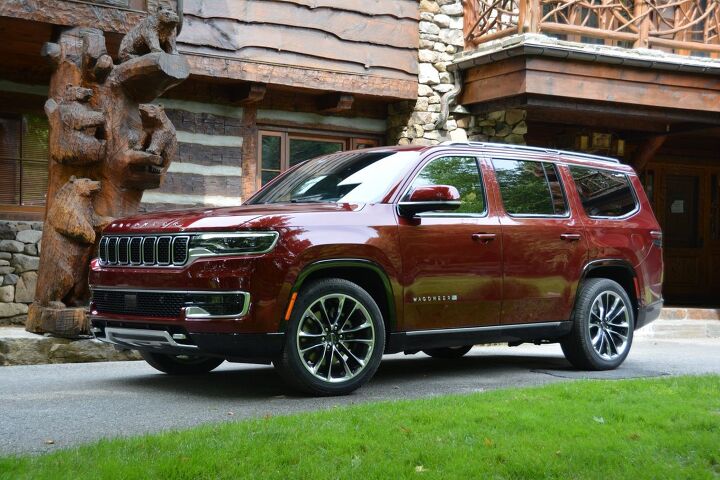






















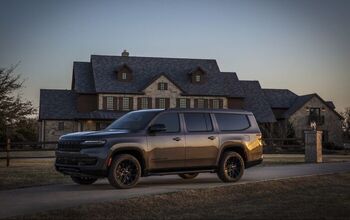


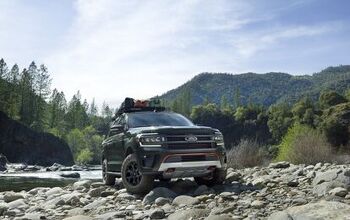
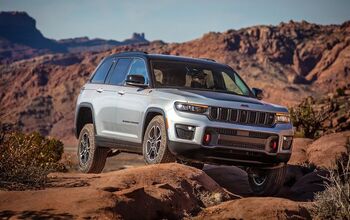
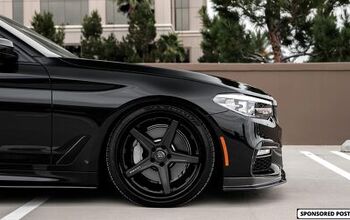









Comments
Join the conversation